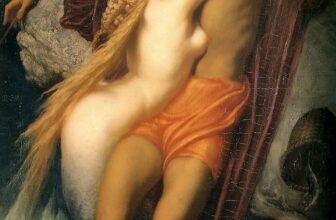
The Story and Meaning Behind St. Michael Vanquishing Satan: A Timeless Masterpiece
Throughout the centuries, art has served as a bridge between the mortal and the divine, capturing complex narratives of good versus evil, triumph over darkness, and the resilience of the human spirit. Few works illustrate this better than St. Michael Vanquishing Satan, a painting that has stirred imaginations and inspired faith for generations.
In this post, we will dive deep into the meaning of St. Michael Vanquishing Satan, explore the dramatic story it depicts, discover the artist behind it, and learn where this remarkable painting is housed today.
What Is the Meaning of St. Michael Vanquishing Satan?
At its core, St. Michael Vanquishing Satan is a vivid visual representation of the eternal struggle between good and evil. The painting portrays Saint Michael the Archangel, the leader of the heavenly hosts, conquering Satan, who is often depicted as a dragon or a monstrous, demonic figure.
Saint Michael, according to Christian tradition, is the commander of God’s army. His role is pivotal during the “War in Heaven,” a biblical event described most notably in the Book of Revelation (Revelation 12:7–9):
“And there was war in heaven: Michael and his angels fought against the dragon; and the dragon fought and his angels, and prevailed not; neither was their place found any more in heaven.”
The painting captures the climactic moment of that celestial battle. Saint Michael stands in radiant, almost divine beauty, with a sword or a spear in hand, dominating a writhing, defeated Satan beneath him. The contrast between the angel’s purity and the devil’s grotesqueness highlights the triumph of divine justice over rebellion and evil.
Symbolically, the painting speaks to the victory of righteousness, order, and divine will. It serves as a reminder that no matter how powerful evil may appear, it is ultimately powerless against divine truth and virtue.
The image of St. Michael in action also carries personal meanings for believers: it symbolizes the need to resist temptation, to combat personal demons, and to uphold justice and morality even in the face of overwhelming odds.
How Did St. Michael Defeat Satan?
In Christian tradition, the story of Saint Michael’s battle with Satan is a cosmic drama filled with intense emotion and theological depth.
According to the Bible and ancient Christian writings, Lucifer was once the most beautiful and powerful of all angels. However, pride led him to rebel against God, convincing a third of the angels to join him in an attempt to overthrow divine authority. This insurrection could not stand, and God summoned His loyal angels to fight against the rebels.
Saint Michael emerged as the commander of the heavenly armies. His name itself means “Who is like God?”, a direct challenge to Lucifer’s pride and arrogance.
Armed with divine strength and the authority of God, Michael led the angels into battle. With his sword or spear, he cast Lucifer, now known as Satan, and his followers out of Heaven and into Hell. This act was not just physical but moral: Michael defeated Satan’s pride with humility, his rebellion with obedience, his falsehood with truth.
This narrative became an enduring symbol of the battle each person faces: the internal struggle against sin, pride, and evil inclinations. Michael’s victory reassures believers that divine help is always available, and that good ultimately triumphs over evil.
In art, this dramatic moment is depicted with striking symbolism: Michael is usually shown standing over Satan, weapon in hand, often serene and composed, symbolizing the peace and order that follows the triumph over chaos and sin.
Who Painted St. Michael Vanquishing Satan?
One of the most famous versions of St. Michael Vanquishing Satan was painted by the Italian Renaissance master Raphael (Raffaello Sanzio da Urbino).
Raphael painted St. Michael Vanquishing Satan (also known simply as St. Michael) around 1518, during the height of the High Renaissance. Commissioned by Pope Leo X, the painting was intended as a gift for King Francis I of France, symbolizing both divine favor and the king’s role as a defender of the faith.
Raphael’s version of the story is widely celebrated for its incredible composition, vibrant color palette, and delicate yet powerful rendering of the figures. Michael appears youthful and almost ethereal, a glowing figure of grace and strength, contrasting with the dark, grotesque form of Satan below.
Raphael’s ability to blend divine beauty with intense drama makes this painting one of the finest visual interpretations of the biblical story.
It’s worth noting that while Raphael’s St. Michael is perhaps the most famous, several other artists have also depicted the scene. Among them are:
Guido Reni, who painted Saint Michael (circa 1636), an elegant and striking Baroque interpretation.
Gustave Doré, who produced a stunning engraving of St. Michael defeating Satan.
Peter Paul Rubens, who created dynamic, dramatic portrayals of the heavenly battle.
Each artist brought their own style, cultural context, and emotional interpretation to the scene, enriching its legacy in Western art.
The Story of St. Michael Vanquishing Satan: A Closer Look
The story of Michael and Satan can be traced back not just to the Bible but also to centuries of Christian tradition, mythology, and liturgical practice.
The Heavenly Battle
The idea of a “war in heaven” is deeply rooted in Christian theology. Satan, consumed by pride, sought to usurp God’s throne. As the “accuser” and the “father of lies,” Satan’s rebellion represented the first sin in the universe: prideful disobedience against divine order.
Michael’s role as the defender of heaven highlights not only the necessity of obedience to divine law but also the power of humility and faith.
Michael as Patron and Protector
Over time, Saint Michael became the patron saint of warriors, police officers, and anyone who fights against injustice. In Catholicism, he is invoked for protection against evil, both spiritual and physical.
The prayer to Saint Michael the Archangel, composed by Pope Leo XIII in 1886, is still recited by many Catholics today:
“Saint Michael the Archangel, defend us in battle; be our protection against the wickedness and snares of the devil.”
Thus, the painting isn’t just a static artwork, it embodies a living tradition of faith, courage, and divine guardianship.
Artistic Interpretation
In Raphael’s painting, the style and mood reflect the Renaissance ideals of beauty, balance, and humanism. Michael’s perfect form and composed expression reflect not only his divine nature but also the Renaissance belief in the harmony between body, soul, and cosmos.
Raphael’s Michael is not depicted as a ferocious, wrathful avenger. Instead, he is a noble, almost serene figure, suggesting that the defeat of evil is inevitable and divinely ordained, not a chaotic, desperate struggle.
The colors Raphael uses, bright golds, cool blues, fiery reds, intensify the visual impact and underline the cosmic significance of the battle. Every detail, from the poised elegance of Michael’s pose to the writhing horror of Satan’s form, adds layers of meaning to the narrative.
Where Is St. Michael Vanquishing Satan Located Today?
Today, Raphael’s masterpiece, St. Michael Vanquishing Satan, is proudly housed in the Louvre Museum in Paris, France.
The Louvre, known for its unparalleled collection of art masterpieces from all periods and cultures, considers Raphael’s St. Michael one of its great treasures. Visitors to the museum can view the painting in the Department of Paintings, among other Renaissance masterpieces.
The painting has been preserved with great care, allowing new generations to admire its beauty and ponder its timeless themes. The Louvre’s efforts ensure that Raphael’s vision, of a universe where good conquers evil, continues to inspire viewers from around the world.
Why St. Michael Vanquishing Satan Still Matters
Even today, centuries after its creation, St. Michael Vanquishing Satan continues to resonate deeply.
It speaks to universal human experiences: the struggle between right and wrong, the temptation to rebel against the good, and the hope that justice and righteousness will prevail. It reassures those battling their own “demons” that they are not alone and that divine help is always near.
Through Raphael’s divine brush, we see not just a battle in heaven, but the battle within every soul, a battle that, with faith, courage, and grace, we can all hope to win.
In a world that often seems beset by chaos and uncertainty, the image of Saint Michael standing triumphant offers a powerful symbol of hope: a reminder that light overcomes darkness, and that truth, humility, and faith endure forever.




